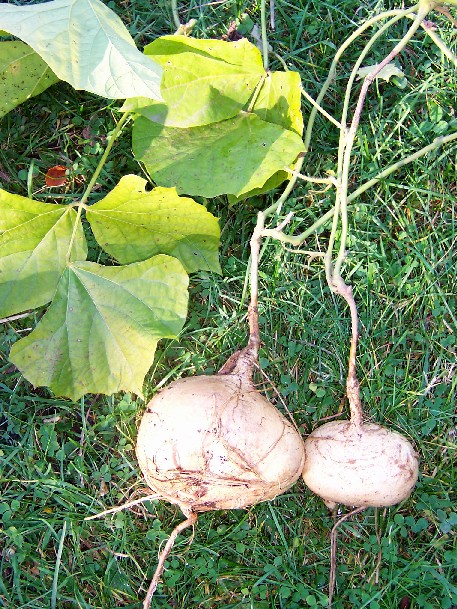

Jicama might sound a little foreign, not until you have seen what this is (see pictures above).
Better known as 'sengkwang' or 'bengkoang' in Malaysia, in other parts of the world, this tuber is also known as yam bean, Mexican water chestnut or Mexican turnip.
This is a perennial (a plant that lives longer than 2 years) vine plant that grows vigorously under semitropical and tropical climates. Unlike other starch roots like potatoes or sweet potatoes where the peel (skin) may be eaten, Jicama features a thick, brown inedible skin which reveals a white, starchy flesh that has a crisp texture and fruit-like succulent, sweet-starchy taste.
The many nutritional values of Jicama makes it a perfect tuber to be included in your everyday meal.
1. Rich source of Prebiotics
An excellent source of oligofructose inulin, a prebiotic that can promote the growth of beneficial bacteria in the gut. Prebiotics are the 'food' that the probiotics (beneficial bacteria) thrive on. Other rich food sources of prebiotics include onions, Jerusalem artichokes, bananas, asparagus and garlic. Probiotics on the other hand, have been show clinically to help with antibiotic-associated diarrhoea, Crohn's dieases, irritable bowel syndrome (IBS), and urogenital health in women.
2. Rich in Vitamin C
One cup of raw Jicama slices provides more than 24mg of Vitamin C. Vitamin C is a powerful water-soluble anti-oxidant that helps body scavenge harmful body radicals, offering protection against viral cough and colds, inflammation and cancer. Eating vitamin C-rich foods can increase collagen production, which can help improve skin texture, speed wound healing, and give a healthy glowing skin.
*SAFETY CONCERNS*
Jicama contains a water-soluble organic toxin known as rotenone, highly concentrated especially in the leaf tops, stems and seed pods, and at much lower levels in the roots. Several studies found that this is linked to the development of Parkinson's disease. However, peeled roots are safe for human consumption, including in children.

No comments:
Post a Comment